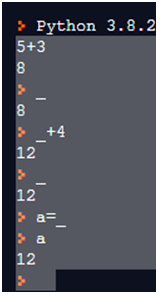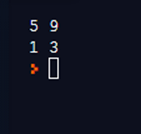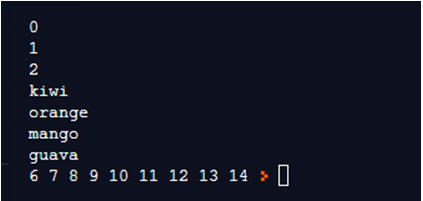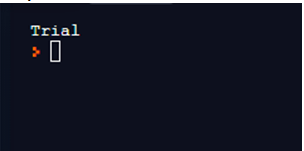Updated April 11, 2023
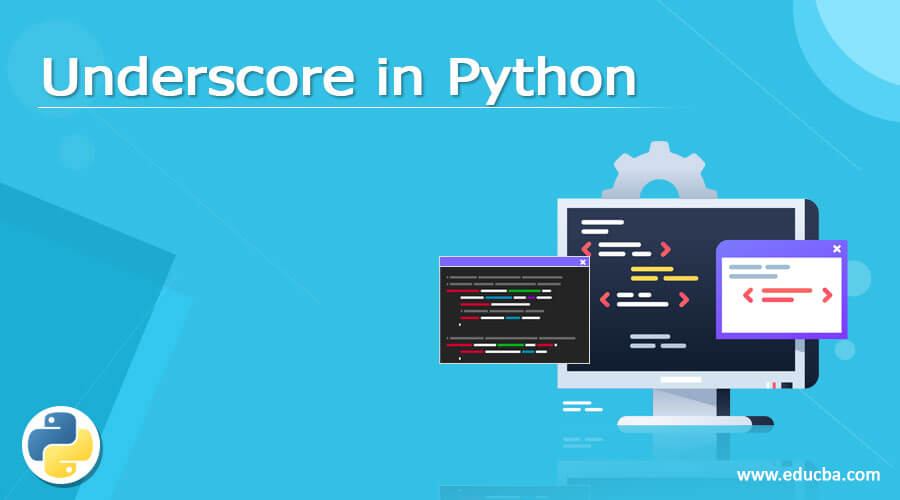
Definition of Python Underscore
Python underscore plays a significant role in an entire python programming language. It provides leads or hints to another programmer about the intent of using the underscore for referring to some other class or something within the class itself. Python underscores both single and double underscore has some intention when used in any of the implementations. Single and double underscores have most of the relevancy to the variables and method names. Python interpreter is related to the single underscore in a way where it asks to make the variable rewrite where conflicts do not arise while manipulation.
Syntax:
Underscore in Python has syntax representation and usage according to the requirement if in case it wants to resolve conflict names, keywords, variables, etc.
Representation when used with an interpreter
_30
_*6
180
Representation when used with variables and functions
_internal_nme = 'one_nod'
_internal_vrsion = '1.05'Representation with for loop
for_inrange (50)Representation using init& self
_ _init_ _ (self)Normal illicitation
_ = 2How Does Underscore Work in Python?
- Underscore in Python has a different working pattern which is used and provoked accordingly as per requirement.
- Underscore is a unique variable in python that has its own significance and importance in the entire programming language that needs to be checked when it comes to various use cases.
- In general, an underscore is used with an interpreter to make manipulation where the variable is defined and then based on it storage and retrieval are made like in future if that variable is not required but is needed at that particular instance then this type of underscore completely satisfies the scenario making it more robust and versatile.
- Then comes another scenario where the values are ignored when it comes to unpackaging of variables that are not needed at that time for specific values then make the value assign the same.
- Here ignoring variables means the values that are actually ignored can be used for giving as a variable next time to some other variable in need as in the future.
- Then it can be also be used in the looping concepts as python language supports for looping as well it meets that requirement by making the underscore defined that variable within.
- Then there is single Pre Underscore, double pre underscore and post underscores for many of the things as defined.
- Most often single pre underscore is used internally within the structure to make it work accordingly.
Examples of Underscore in Python
Following are the examples as given below:
Example #1
This example represents the various conditions in general which is given to the interpreter for any manipulation as shown in the output below.
5+3
8
> _
8
> _+4
12
> _
12
> a=_
> a
12
>Output:
Explanation: Since the underscore is the unique representation used in the entire python thus it is used for performing many options where the addition and underscore have different significance like it represents the previous value to be fed into the exact value and then retrieve the values accordingly. Mostly it is supported for general interpreters.
Example #2
This example represents the usage of Underscore in Python where the values defined are ignored if not needed like even in future code for reference as shown in the output below.
p, _, q = (5, 8, 9)
print(p, q)
p, *_, q = (1, 7, 5, 6, 9, 2, 3)
print(p, q)Output:
Explanation: In this context initially values initialized are being ignored then the variable pointing to the exact variable is being unplaced for any kind of manipulation making the entire process provoking to do the same and also this scenario is only supported by Python 3.x and above with the unpackaging of extended variables.
Example #3
This program demonstrates how the variables behave when loops are applied on variables for any manipulation and how underscore behaves in that case as shown in the output below.
for _ in range(3):
print(_)
fruits = ["kiwi", "orange", "mango", "guava"]
for _ in fruits:
print(_)
_ = 6
while _ < 15:
print(_, end = ' ')
_ += 1Output:
Explanation: This program demonstrates the loop variations of for loop to make different variations thus here the looping is performed initially then a list of displays with the fruits defined is given with a print to make the variable marked into space for working. The list display and variations can be anything no needs to be particular especially for iteration purposes.
Example #4
This program demonstrates the variations and changes on the naming convention to make the entire program conflict-free when it comes to defining variable names using a single Pre underscore as shown in the output.
class TestVar:
def __init__(self):
self.identity = "name as identity"
self._uidnty = 800
obj = TestVar()
print(obj.identity)
print(obj._uidnty)Output:
Example #5
This program demonstrates the Double underscore with some of the magic method and dunder method as shown in the output below.
_One_Ex_Class__name = "Trial"
class One_Ex_Class:
def return_name(self):
return __name
obj = One_Ex_Class()
print(obj.return_name())Output:
Explanation: double underscore in python with dangling pointer and many other things can be used in varied ways one of them is mangling and solving the method by following and explicitly defining the variable as shown.
Example #6
This program demonstrates the separation of a number of digits when it comes to making all the numbers or digits separate as per specific requirements for everything to be in one format as shown below.
one_million = 1_000_000
hexa_operations = 0x_24_cd
octa_operations = 0o_64
binary_operations = 0b_0010
print(one_million)
print(hexa_operations)
print(octa_operations)
print(binary_operations)Output:
Explanation: Here almost all the variables declared can withhold some of the values with binary, octal, or Hexa representation to make the number of digits separated with some value thus converting all the representation in one or the other form, therefore, simplifying the entire thing.
Conclusion
Underscore in Python is unique and is available with python version more than 3 but now it is mostly available with almost all versions. This unique variable has a lot of advantages and disadvantages associated in a way where the reference and resource utilization with respect to future reference is also simplified.
Recommended Articles
We hope that this EDUCBA information on “Underscore in Python” was beneficial to you. You can view EDUCBA’s recommended articles for more information.
